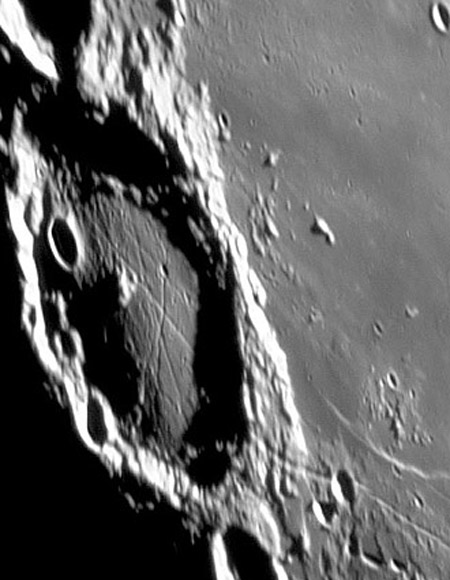Difference between revisions of "May 20, 2010"
| Line 4: | Line 4: | ||
<!-- ws:start:WikiTextHeadingRule:1:<h1> --> | <!-- ws:start:WikiTextHeadingRule:1:<h1> --> | ||
<!-- ws:start:WikiTextLocalImageRule:16:<img src="/file/view/LPOD-May20-10.jpg/143356127/LPOD-May20-10.jpg" alt="" title="" /> -->[[File:LPOD-May20-10.jpg|LPOD-May20-10.jpg]]<!-- ws:end:WikiTextLocalImageRule:16 --><br /> | <!-- ws:start:WikiTextLocalImageRule:16:<img src="/file/view/LPOD-May20-10.jpg/143356127/LPOD-May20-10.jpg" alt="" title="" /> -->[[File:LPOD-May20-10.jpg|LPOD-May20-10.jpg]]<!-- ws:end:WikiTextLocalImageRule:16 --><br /> | ||
| − | <em>image by [mailto:bruno.daversin48@orange.fr | + | <em>image by [mailto:bruno.daversin48@orange.fr </em><br /> |
<br /> | <br /> | ||
| − | Bruno Daversin has done it again! This recent image of Hevelius is the finest ever taken from the surface of the Earth! Ignomiously stuck near his lunar rivals Riccioli and Grimaldi - they ignored all the names he had given to craters - Hevelius is an 106 km wide crater that once probably looked like Copernicus. But its terraces have lost their sharpness and only one off-center peak sticks up a kilometer. Hevelius' depth of about 2.1 km suggests that it has been filled in by some material by about 1.5 km. The surface of the floor is relatively smooth, but not dark, so if mare lavas originally flooded Hevelius they have since been veneered with lighter material. Alternatively, Hevelius' fill may have come airmail as ejecta from the formation of the Orientale Basin. The shadowing on the floor south of the peak shows that the floor is slightly domed upward. The fascinating feature about Hevelius is its system of linear rilles. Sometimes an X pattern can be [http://www.lpod.org/archive/LPOD-2004-09-01.htm | + | Bruno Daversin has done it again! This recent image of Hevelius is the finest ever taken from the surface of the Earth! Ignomiously stuck near his lunar rivals Riccioli and Grimaldi - they ignored all the names he had given to craters - Hevelius is an 106 km wide crater that once probably looked like Copernicus. But its terraces have lost their sharpness and only one off-center peak sticks up a kilometer. Hevelius' depth of about 2.1 km suggests that it has been filled in by some material by about 1.5 km. The surface of the floor is relatively smooth, but not dark, so if mare lavas originally flooded Hevelius they have since been veneered with lighter material. Alternatively, Hevelius' fill may have come airmail as ejecta from the formation of the Orientale Basin. The shadowing on the floor south of the peak shows that the floor is slightly domed upward. The fascinating feature about Hevelius is its system of linear rilles. Sometimes an X pattern can be [http://www.lpod.org/archive/LPOD-2004-09-01.htm |
<br /> | <br /> | ||
| − | <em>[mailto:tychocrater@yahoo.com | + | <em>[mailto:tychocrater@yahoo.com <br /> |
This is a classic LPOD first published six years ago on May 6, 2004.</em><br /> | This is a classic LPOD first published six years ago on May 6, 2004.</em><br /> | ||
<br /> | <br /> | ||
| Line 16: | Line 16: | ||
<strong>Related Links</strong><br /> | <strong>Related Links</strong><br /> | ||
Rükl plate [http://the-moon.wikispaces.com/R%C3%BCkl+28 28]<br /> | Rükl plate [http://the-moon.wikispaces.com/R%C3%BCkl+28 28]<br /> | ||
| − | Lunar Orbiter IV | + | Lunar Orbiter IV <a class="wiki_link_ext" href="http://www.lpi.usra.edu/resources/lunar_orbiter/images/img/iv_162_h1.jpg"view]<br /> |
<br /> | <br /> | ||
<hr /> | <hr /> | ||
| − | <div>You can support LPOD when you buy any book from Amazon thru | + | <div>You can support LPOD when you buy any book from Amazon thru <a class="wiki_link_ext" href="http://www.lpod.org/?page_id=591"LPOD!]<br /> |
</div> | </div> | ||
Revision as of 21:17, 2 January 2015
Heavenly Hevelius

image by [mailto:bruno.daversin48@orange.fr
Bruno Daversin has done it again! This recent image of Hevelius is the finest ever taken from the surface of the Earth! Ignomiously stuck near his lunar rivals Riccioli and Grimaldi - they ignored all the names he had given to craters - Hevelius is an 106 km wide crater that once probably looked like Copernicus. But its terraces have lost their sharpness and only one off-center peak sticks up a kilometer. Hevelius' depth of about 2.1 km suggests that it has been filled in by some material by about 1.5 km. The surface of the floor is relatively smooth, but not dark, so if mare lavas originally flooded Hevelius they have since been veneered with lighter material. Alternatively, Hevelius' fill may have come airmail as ejecta from the formation of the Orientale Basin. The shadowing on the floor south of the peak shows that the floor is slightly domed upward. The fascinating feature about Hevelius is its system of linear rilles. Sometimes an X pattern can be [http://www.lpod.org/archive/LPOD-2004-09-01.htm
[mailto:tychocrater@yahoo.com
This is a classic LPOD first published six years ago on May 6, 2004.
Technical Details
May 2, 2004. Ludiver Planetarium and Observatory 24" Cassegrain, f/D=16.
Related Links
Rükl plate 28
Lunar Orbiter IV <a class="wiki_link_ext" href=" "view]
"view]
COMMENTS?
Click on this icon File:PostIcon.jpg at the upper right to post a comment.



